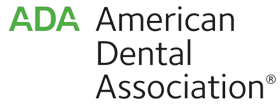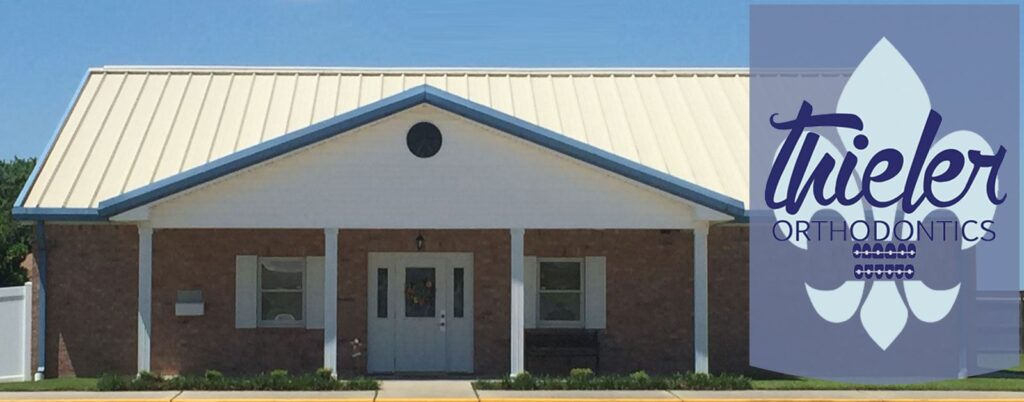
Meet Dr. Nicole Thieler, D.D.S., M.S.D.

Dr. Thieler grew up on the Westbank of New Orleans, where she graduated as valedictorian of her class from Archbishop Blenk High School. She then attended Tulane University and graduated summa cum laude with a Bachelor of Science in both Cell & Molecular Biology and Psychology. She continued her education at LSUHSC School of Dentistry in New Orleans, graduating with a 4.0 GPA and earning her Doctorate of Dental Surgery degree in 2012. This was followed by two additional years of post-graduate training in the specialty of Orthodontics, culminating in 2014 with a Master of Science in Dentistry degree.
Dr. Thieler relocated to the Houma area shortly after completion of residency to start her practice because her husband’s family owns and operates a local ice service and supply company. She and her husband, Kevin, spend most of their leisure time with family and friends, but they also enjoy traveling, trying new restaurants, and attending Saints games. Dr. Thieler also participates in community events as a member of Rotary International and the Houma-Terrebonne Chamber of Commerce.
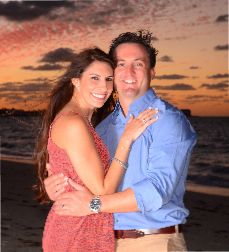
Service With A Smile
Smile for All Ages
Although most people think of pre-teens and teenagers when they think of orthodontics, the American Association of Orthodontists actually recommends all children get their first check-up with an orthodontic specialist around age 7. An initial orthodontic check-up may reveal normal growth and development, but if a problem is identified instead, early treatment may prevent or intercept more serious orthodontic problems from developing later. In addition, for adults who never had orthodontic treatment, it’s not too late for braces! In fact, the American Association of Orthodontists cites that 1 in 5 orthodontic patients is over age 21. Dr. Thieler is dedicated to creating beautiful, healthy smiles for all ages and is very proud to be able to change her patients’ lives through her chosen profession.
Treatment Options
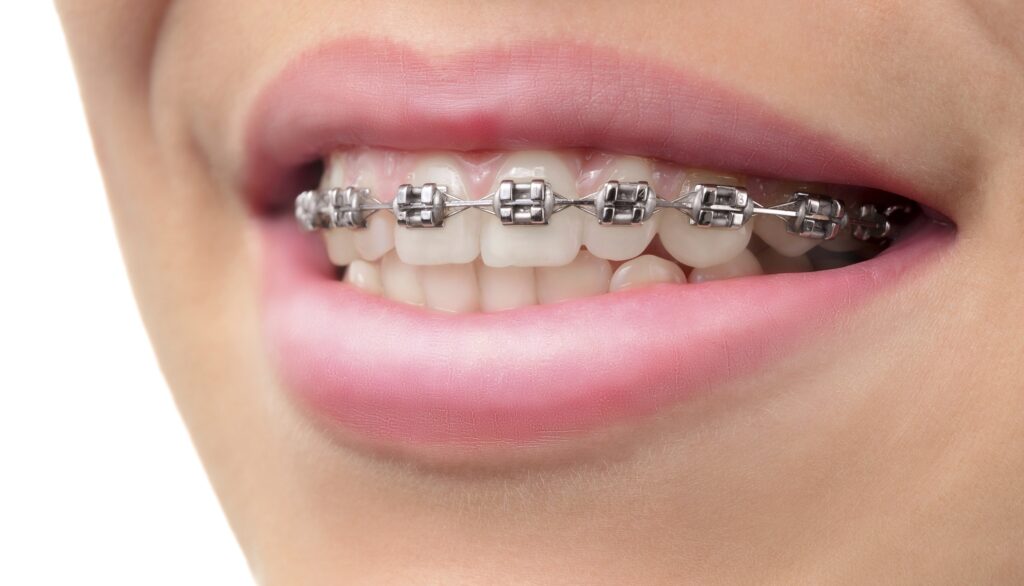
Traditional metal braces are the most common choice. They are made of high-grade stainless steel, and patients have the option of adding colored elastics for a personalized smile.

Traditional metal braces are the most common choice. They are made of high-grade stainless steel, and patients have the option of adding colored elastics for a personalized smile.
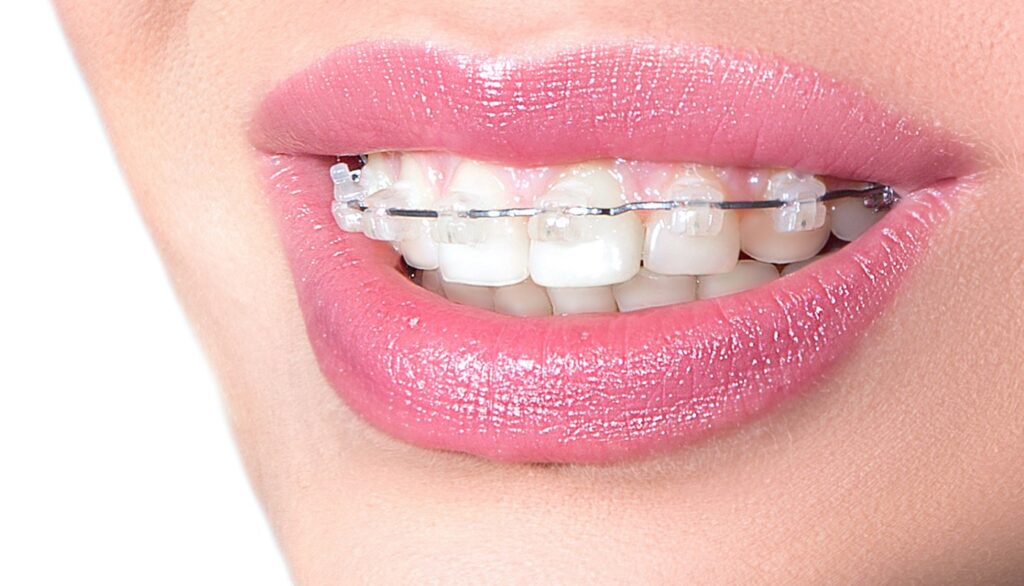
Ceramic (“clear”) braces are less visible than metal braces. For this reason, ceramic braces are used mainly on patients with cosmetic concerns. While they are less visible, they do require more attention to oral hygiene as they are larger and more brittle than traditional metal braces.
Life With Braces
Eating With Braces
Eating restricted foods and lack of appliance care may cause problems which could result in extra visits for repairs and lengthen treatment time unnecessarily. Patients should avoid foods that are hard, sticky, or chewy. Patients should also avoid any food and drinks that are known to cause cavities. Patients should floss, brush, and rinse their mouth regularly between meals.
The following are examples of food to avoid during treatment:
- Beef jerky
- Caramel
- Celery
- Corn chips
- Crispy tortilla chips
- Food containing bones
- Gum
- Hard or sticky candy
- Ice
- Popcorn
- Soft drinks
- Taffy/Tootsie Rolls
There will be ample time to enjoy these restricted foods after treatment is complete. Please direct any specific questions about food choices to the orthodontist.
Emergency Information for Patients
(Content and photos courtesy of the American Association of Orthodontists)
The following orthodontic emergencies and their treatments are listed in the order of least severe to the most severe. Only the most severe emergencies may require immediate attention by an orthodontist.
In case of an orthodontic emergency after hours, please call our office phone number and listen to the voicemail for further instructions.
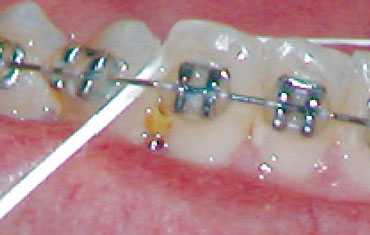
Food Caught Between Teeth
This is not an emergency but can be a little uncomfortable or embarrassing for the braces-wearing patient. It is easily fixed with a piece of dental floss. Try tying a small knot in the middle of the floss to help remove the food, or use an interproximal brush or toothpick to dislodge food caught between teeth and braces.
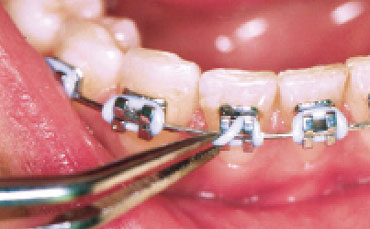
Ligatures Come Off
Tiny rubber bands or small, fine wires, known as ligatures, hold the wire to the bracket. If a rubber ligature should come off, you may be able to put it back in place using sterile tweezers. If a wire ligature comes loose, simply remove it with sterile tweezers. If the wire ligature is sticking out into the lip but is not loose, it may be bent back down with a Q-tip or pencil eraser to eliminate the irritation.
Of course, when one ligature pops off or breaks, others may follow. Be sure to examine all ligatures. Missing or broken ligatures should be brought to the attention of the orthodontist, who will advise whether the patient should be seen.
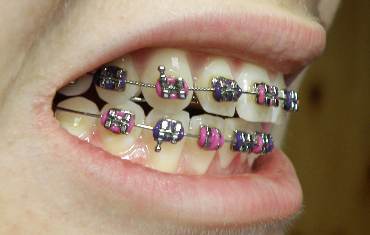
Discomfort
It’s normal for a patient to have discomfort for a day or two after braces or retainers are adjusted, but it can make eating uncomfortable. Reassure the patient that the discomfort is both normal and temporary. Encourage soft foods. Have the patient rinse the mouth with warm salt water. If the patient is allowed to have over-the-counter pain relievers, acetaminophen or ibuprofen may be effective.
Some patients are susceptible to episodes of mouth sores. While braces do not cause them, they may be precipitated or exacerbated by an irritation from braces. One or several areas of ulceration of the cheeks, lips or tongue may appear. This is not an emergency but may be very uncomfortable for the patient. Prompt relief may be achieved by applying a small amount of topical anesthetic (such as Orabase or Ora-Gel) directly to the ulcerated surface using a cotton swab. Reapply as needed.
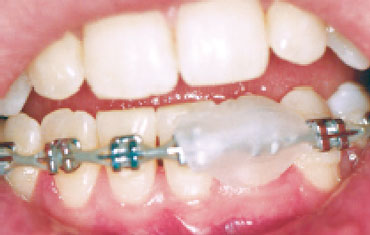
Irritation in Mouth
Sometimes new braces can be irritating to the mouth, especially when the patient is eating. A small amount of non-medicinal relief wax makes an excellent buffer between metal and mouth. Simply pinch off a small piece and roll it into a ball the size of a small pea. Flatten the ball and place it completely over the area of the braces causing irritation. The patient may then eat lunch more comfortably. If the wax is accidentally ingested, it’s not a problem; the wax is harmless.
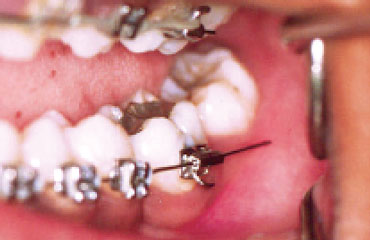
Protruding Wire
Occasionally the end of a wire will work itself out of place and irritate the patient’s mouth. Use a Q-tip or pencil eraser to push the wire so that it is flat against the tooth. If the wire cannot be moved into a comfortable position, cover it with relief wax. (See Irritation in Mouth above for instructions on applying relief wax.) Make sure the orthodontist is aware of the problem.
In a situation where the wire is extremely bothersome and the patient will not be able to see the orthodontist anytime soon, as a last resort, you may clip the wire. Reduce the possibility of the patient swallowing the snipped piece of wire by using folded tissue or gauze around the area. Use a pair of sharp clippers and snip off the protruding wire. Relief wax may still be necessary to provide comfort to the irritated area.
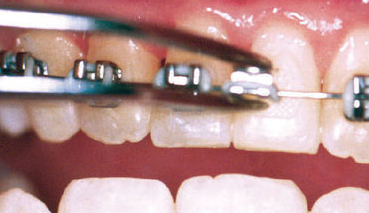
Loose Wires, Brackets, or Bands
Brackets are the parts of braces attached to teeth with a special adhesive. They are generally positioned in the center of each tooth. The bracket can be knocked off if the patient has eaten one of those hard or crunchy foods orthodontic patients are instructed to avoid, or if the mouth is struck while at play. (All patients, especially those with braces, are encouraged to wear a protective mouth guard while playing sports.) If the bracket is off-center, the adhesive may have failed. Call and immediately notify the orthodontist, who will determine the course of action.
If the loose bracket has rotated on the wire and is sticking out, and the patient cannot immediately be taken to the orthodontist, you can do a temporary fix to alleviate discomfort and prevent further damage, but take care to prevent swallowing or other injury. To put the bracket back in place, use sterile tweezers to slide the bracket along the wire until it is between two teeth. Rotate the bracket back to the proper position, then slide it back to the center of the tooth.
Contact Us
Thieler Orthodontics
Houma, LA 70360
Phone: 985.876.4484
Fax: 985.876.4498
Office Hours
Monday: Closed
Tuesday: 9:00 AM – 5:00 PM
Wednesday: 8:00 AM – 5:00 PM
Thursday: 8:00 AM – 5:00 PM
Friday: 8:00 AM – 12:00 PM
Saturday: Closed
Sunday: Closed


